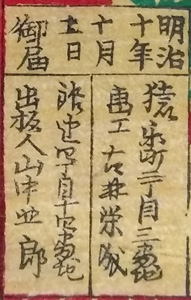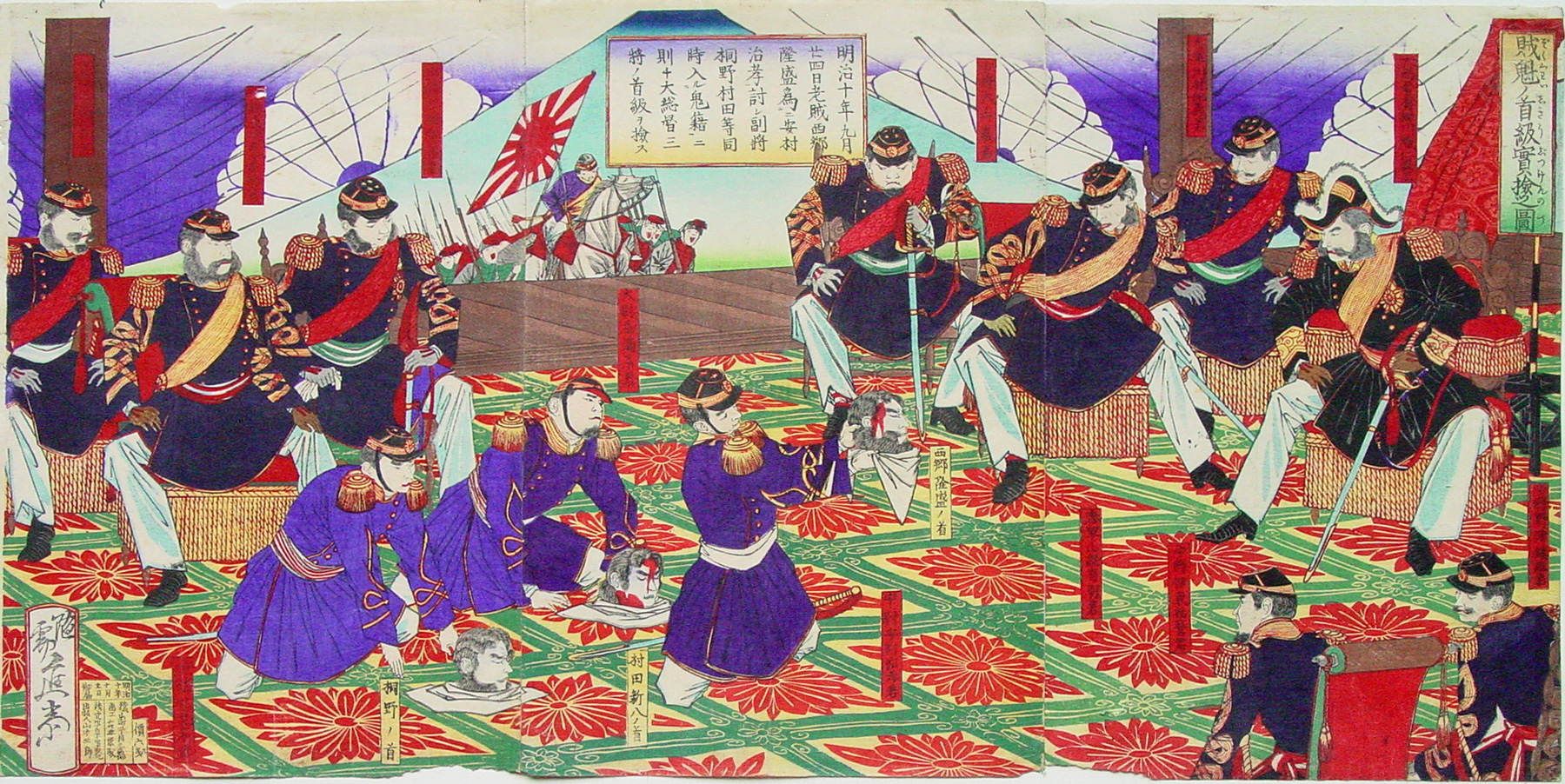About This Print
The severed heads of the Satsuma Rebellion's rebel leader Saigō Takamori and his confederates Murata Shinpachi and Kirino Toshiaki are brought before Prince Arisugawanomiya (1835-1895), titular commander of the imperial forces (right panel, upper right), Kawamura Sumiyoshi (1863-1904) commander of the marines at the final battle of the rebellion at Shiroyama (right panel to left of Arisugawanomiya), and Yamagata Aritomo (1838-1922) actual commander of the imperial forces (right panel, to the left of Kawamura).
Although Saigō's head was severed from his body, this depiction of the presentation of the severed heads of the rebels is a fabrication of the artist and publisher and was repeated in other prints by various artists and publishers. As explained by historian Mark Ravina in his work The Last Samurai, the Meiji government had done away with the medieval practice of displaying heads and the modern imperial army had no need to show their fealty to the central government in this manner.1
A first-hand account of Saigō's corpse by American ship captain John Capen Hubbard, who was employed by the Mitsubishi Steamship Company during the rebellion, is provided by Ravina:
| He was a large powerful looking man, his skin almost white. His clothing had been taken off and he lay there naked. It was a few seconds before I realized his head was cut off. Next to Saigo lay Kirino, then Murata. Saigo's was the only headless body, but the others were a fearful sight to look at. Their heads were dreadfully cut up and it was quite evident that they killed each other. No doubt their heads would all have been cut off by their own people had time permitted. While [we were] looking at the bodies, Saigo's head was brought in and placed by his body. It was a remarkable looking head and any one would have said at once that he must have been the leader.2 |
Severed Head Prints
Immediately after the death of Saigō, prints began appearing showing the severed heads of Saigō and his closest confederates. The prints were commonly entitled kubi jikken 首実検 (inspection of heads) and although they had no factual basis they provided the public with "the correct conclusion to the broad arc of Saigō's life."32 Ibid, p. 211.
3 Ibid., p. 212.
| IHL Catalog | #448 |
| Title | The wealthy chiefs inspecting the decapitated heads of enemies 財魁ノ首級実検之図 Saikai no shakyū jitsuken no zu* |
| Artist | Kobayashi Toshimitsu (active 1876–1904) |
| Signature |  |
| Seal | none |
| Date | October 11, 1877 明治十年十月十一日 御届 [see publisher's seal below] |
| Publisher |  画工 古林栄成 [artist Kobayashi Eisei] 猿樂町二丁目三番地 [artist's address] 出版人 山中北郞 [Yamanaka Kitarō 山中北郞] |
| Carver | |
| Impression | excellent |
| Colors | excellent |
| Condition | fair - three sheets joined; parts of bottom margin missing; other margin damage; minor soiling |
| Genre | ukiyo-e senso-e |
| Miscellaneous |  |
| Format | vertical oban triptych |
| H x W Paper | 14 3/8 x 29 in. (36.5 x 73.7 cm) |
| Collections This Print | |
| Reference Literature |
* This translation of the title was provided by Guy Pepermans on the Ukiyo-e Q&A website forum.


